Johnson Honors the Black Women in STEM
Black Americans have been instrumental in propelling the fields of Science, Technology, Engineering, and Mathematics (STEM) forward. The brilliant minds of Black women in STEM have made a lasting legacy at NASA, breaking through barriers of both race and gender.
Johnson Space Center recognizes the importance of diversity and the invaluable contributions of Black women in STEM fields. These pioneering women help inspire the next generation of Black Americans to pursue careers in STEM and help advance space exploration for all.
Scroll below for stories of inspiring STEM leaders who are pivotal to NASA’s success today.
***
Clare Luckey, Engineer, Mars Architecture Team
As a member of the Mars Architecture Team, Clare Luckey is one of the people at the forefront of designing the first crewed mission to the Red Planet. Her current work involves helping to develop the vision for the initial segment of Mars exploration missions. She also has been named one of Forbes’ 30 under 30 Class of 2024 in the Science category. Her commitment extends beyond the cosmos as she is deeply involved in community outreach, inspiring students to aim for the stars in space careers and encouraging diversity in STEM.
Starting her journey as an intern at Johnson's Center Operations in fall 2018, Luckey's career trajectory has been nothing short of meteoric. She began her career as a contractor at Barrios Technology, focusing on cargo integration for the International Space Station Program, then transitioned to a civil servant position in Center Operations by late 2020. Currently serving in the Exploration Mission Planning Office, Luckey's role is critical not just in Mars exploration but also in the Artemis missions, where she contributes to Lunar Mission Planning in the Mission Analysis and Integrated Assessments team.
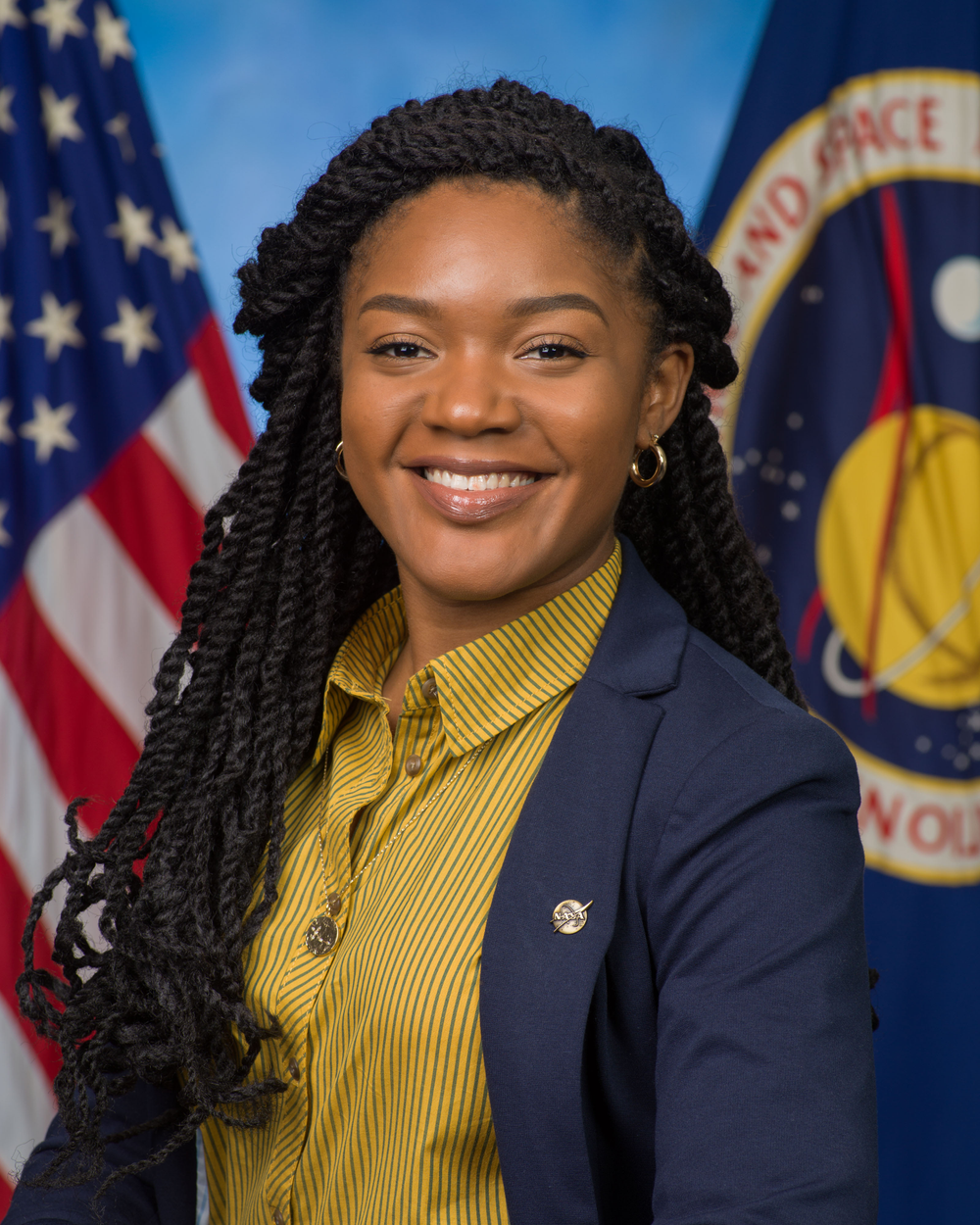
Luckey's innovative thinking is especially crucial as she navigates the complexities of planning travel to Mars. Her ability to compare and adapt strategies from near-term missions like Artemis to the long-term objectives of Mars colonization highlights her unique insight and adaptability. “Mars missions are more open to change because they are far in the future,” said Luckey. “We are still in the process of figuring out not only how to make decisions, but what decisions to make.”
Her influence extends far beyond engineering. Luckey's engagement with global space leaders at the Space Symposium and her contributions as a panelist at the American Institute of Aeronautics and Astronautics Science and Technology Forum exemplify her as a thought leader in aerospace. She also participated in the Space Generation Advisory Council, a board that advises the United Nations on next-generation space exploration concepts. “All of these opportunities have given me different insights into the larger space industry and space economy,” she said.
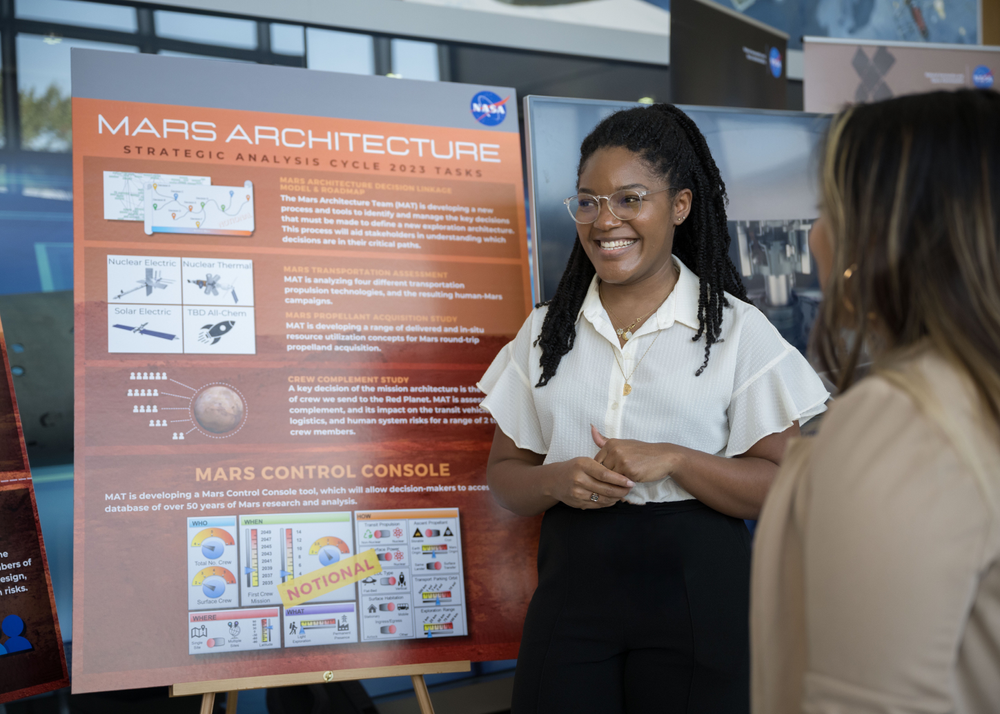
Reflecting on her journey, Luckey attributes her passion for space exploration to a middle school project, "Future Cities," where she and her friends designed a futuristic Mars city. The project ignited her imagination and inspired her to think critically and creatively about the future. “It’s important to build the foundations of mathematics and science at a young age,” she said. “I am really passionate about getting other people who look like me involved in the space industry.”
Luckey’s involvement with the National Society of Black Engineers and her efforts to mentor and help students with school projects gives her great joy. “NASA can invest in the next generation by building a sustainable pipeline alongside sustainable space architecture,” she said. “You have to invest in communities and education so that kids grow up participating in a culmination of activities that make them want to be a part of NASA.” She believes that persistence, passion, and creativity are the top qualities for someone to excel in the space exploration industry.
As a vocal advocate for diversity in the space industry, Luckey emphasizes the importance of community and mentorship within NASA and beyond. “I try to reach out to people and build that community because it is important,” she said. “That’s one of the things that keeps people coming to work - no matter where you work. It’s not the work, it’s the people that keep you coming back. I work with a lot of great people that have built that NASA community.”
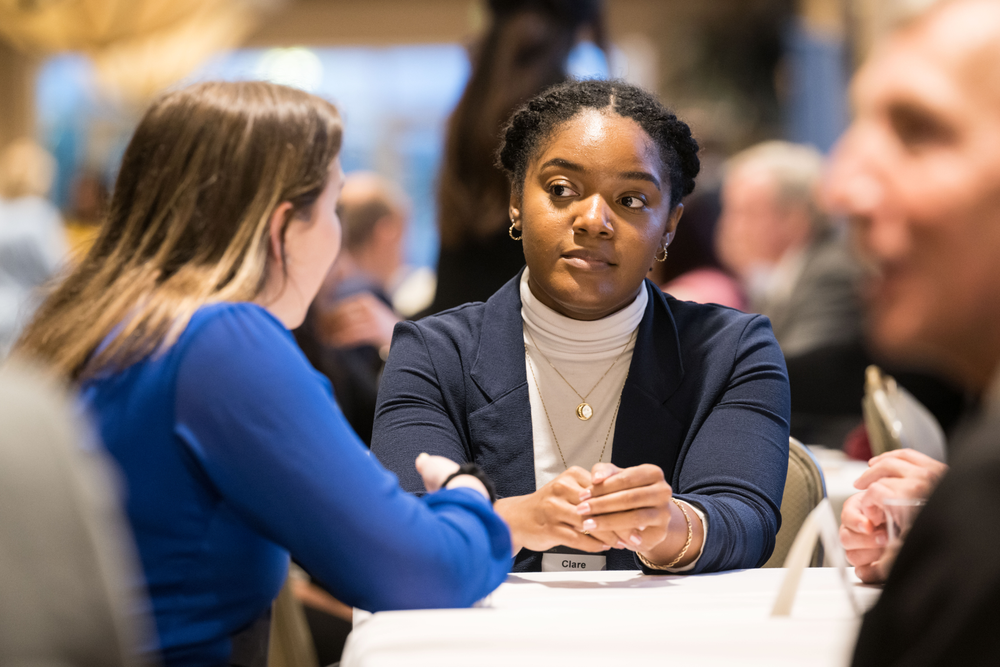
Clare Luckey at the NASA Human Research Program Investigators’ Workshop 2023, “To the Moon: The Next Golden Age of Human Spaceflight,” at the Galveston Island Convention Center on Feb. 8, 2023. Credit: NASA/Josh Valcarcel
Luckey’s advice to aspiring space explorers is, “Just try. Even when you don’t think you’re capable or don’t think you know enough, you will learn as you go.” She also encourages students to search out opportunities and get involved at a young age. “There’s no wrong answer. Just do what you’re interested in, put effort into it, and you’ll end up where you want to go,” she said.
Her favorite part about working at NASA is the outlandishness of it all, she said. “People at NASA are really trying to build the future. The work we do here is amazing and not to be overlooked.” She is looking forward to the Artemis missions because this time is a completely new paradigm. “With Artemis, we’re going to the Moon to stay and to build sustainable architecture,” said Luckey. “We’re going to push forward. I am really excited to see how it turns out, and the international collaboration will be amazing for us.”
Her enthusiasm for the Artemis missions and the future of international space collaboration shines through her work, envisioning a new era of lunar exploration and beyond. “I am grateful to be here,” she said. “The most important thing to me is to be humble and personable. I want to be someone that is approachable, helpful, and easy to learn from so that I can be a mentor to the next generation of students, in the same way that I had mentors.”
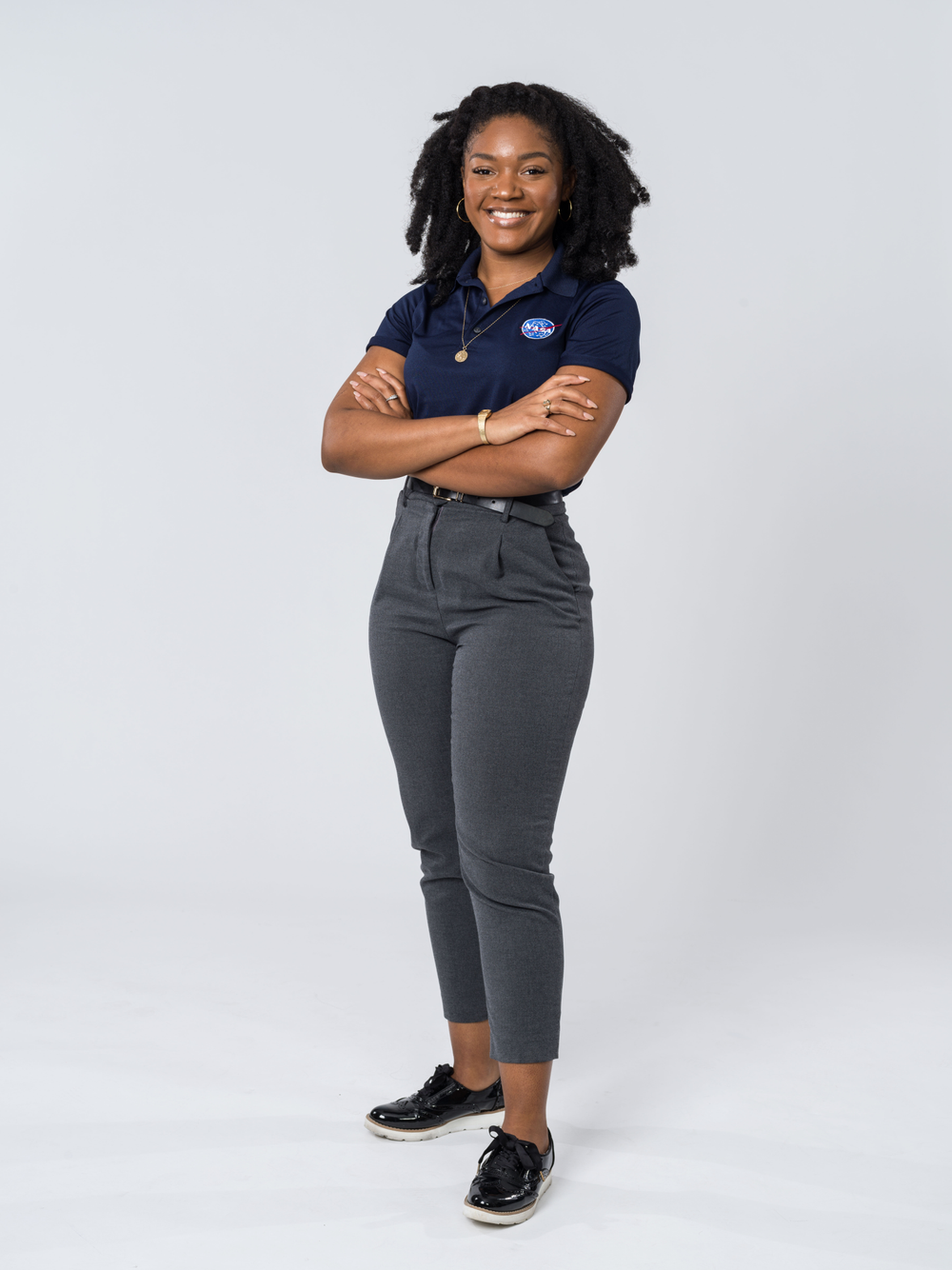
***
Jennifer Scott Williams, Assistant to the Center Director for Technical Integration
Jennifer Scott Williams embodies leadership, innovation, and excitement for life. Her career has been a testament to her unwavering passion and versatility, navigating through various roles and significantly contributing to NASA's milestones and evolution. In her 23 years at NASA, she has combined engineering, business, science communications, and leadership all into one.
Currently in the Center Director's Office, Williams serves as Johnson Director Vanessa Wyche’s assistant for technical integration, supporting meetings such as readiness reviews for the International Space Station and Commercial Crew Programs. Her role also involves coordinating skip-level meetings for Dare | Unite | Explore and overseeing senior staff meetings to ensure that leadership remains informed about the activities happening across the center.
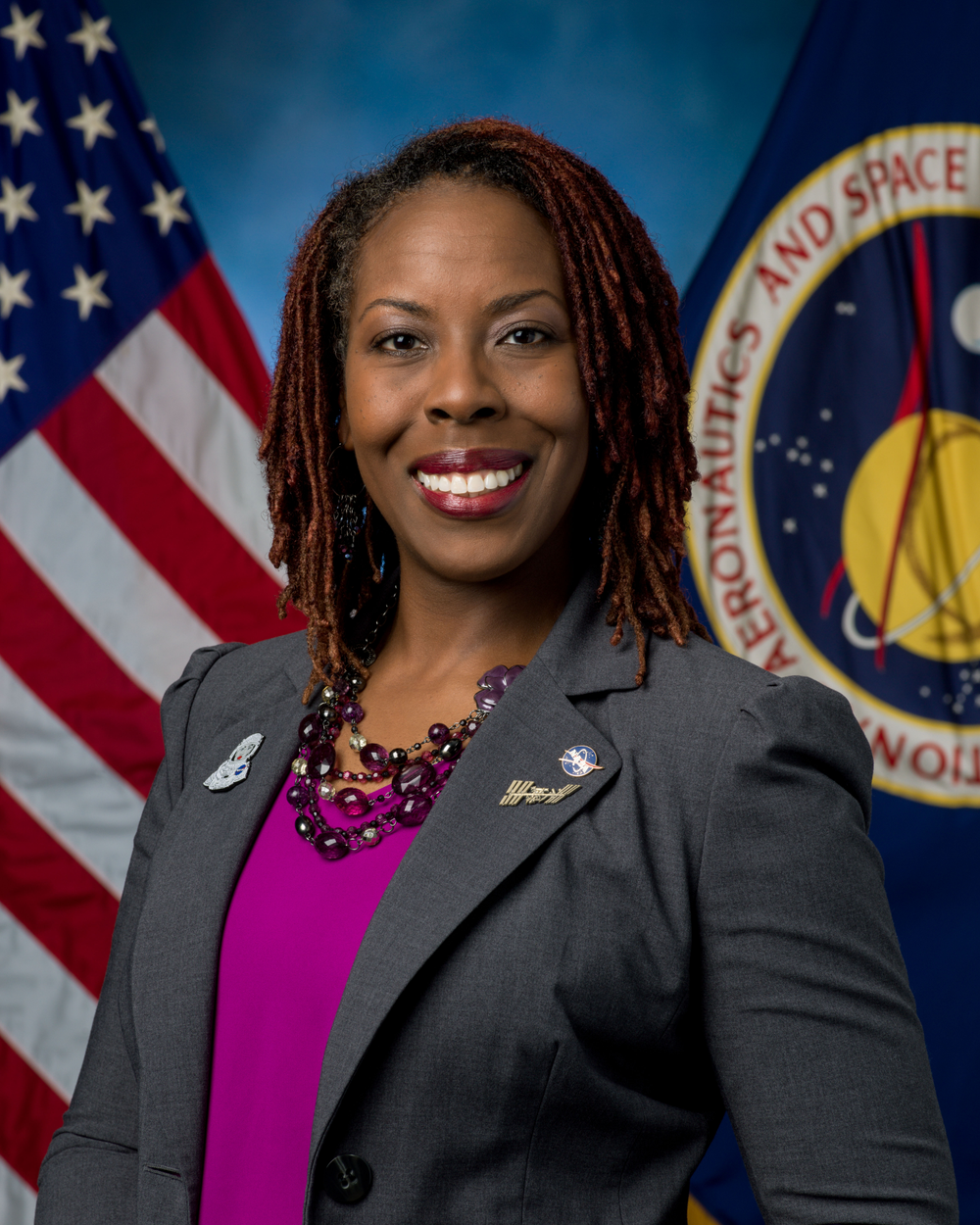
She also plays a role in the International Space Station Program’s Research Integration Office, ensuring crews aboard the space station have the tools they need to complete their research.
"Like many of our laboratories where astronauts conduct their research, understanding the engineering components of the facilities we use on board is crucial," said Williams. "Understanding the science is also critical," she added. "It adds meaning to our work when we help execute the science onboard and communicate the creative insights and results from the experiments conducted. Being a good communicator is extremely important and creativity makes that message real and mean something to the public.”
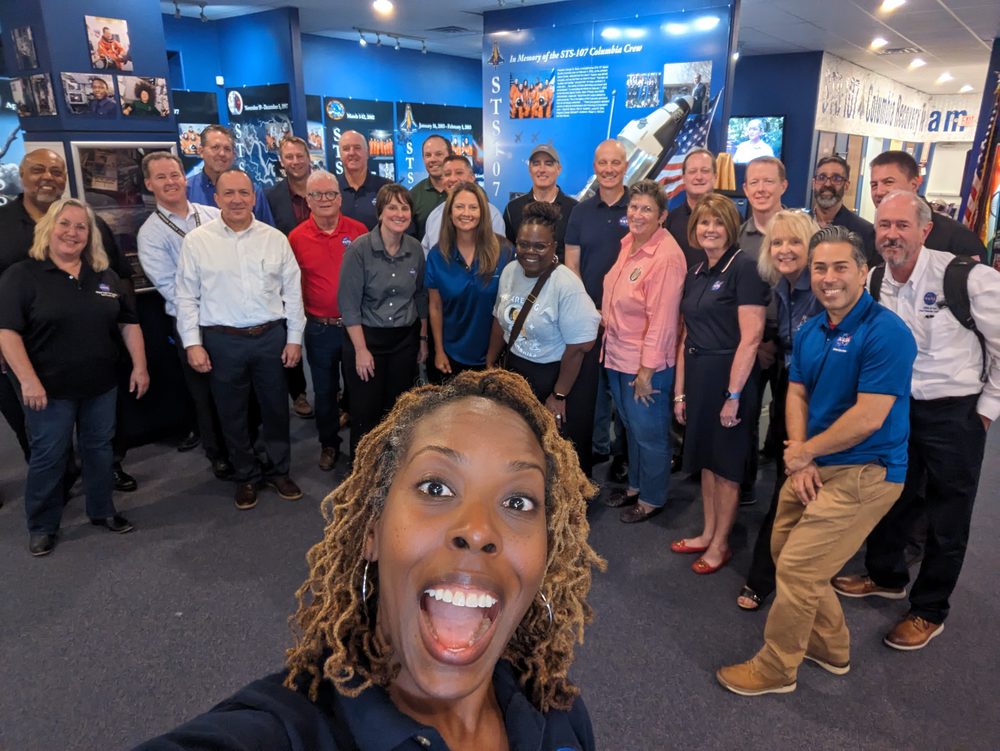
Her journey also included groundbreaking work on the Boeing Starliner spacecraft, where she served as the instrumentation and communications officer on the Boeing Mission Operations Team. Her efforts established operational foundations that will shape its future space missions. Williams was instrumental in developing the vehicle communications systems, understanding its operations, creating simulations, coding, and comprehending the computer systems, addressing all the fundamental aspects necessary for the spacecraft.
Beyond her technical contributions, Williams is deeply committed to inspiring the next generation of explorers. She also managed the Minority University Research and Education Project, encouraging students of color to engage in STEM fields.
She led a team that collaborated with students, teachers, and educational institutions through the Pre-Service Teacher Program. Williams said that working in the Office of STEM Engagement was a new experience that became life-changing for her. “I really rediscovered a passion that I have for students and education,” she said. “I love being able to help interns navigate the NASA environment and help people of color be able to apply for NASA jobs. It takes all perspectives to accomplish our mission.”
Williams earned dual bachelor's degrees in mathematics and electrical engineering from Spelman College and the Georgia Institute of Technology. She later received a master's degree in electrical engineering from the University of Houston. She belongs to the Spelman College National Alumni Association and holds a lifetime membership in the National Society of Black Engineers.
2329.png?generation=1715874712590727)
Williams is an advocate for youth interested in pursuing STEM careers. Her advice is, “Come on and do it. We are out here,” she added “I love that we are embracing our differences instead of shunning differences because having people with different backgrounds, personalities, insights, and perspectives is what's going to help us get back to the Moon.”
“For the Artemis Generation, we need creative minds,” she said. “We need artists, scientists, engineers, technologists, physicians, attorneys, and financial connoisseurs. This next generation is going to have to be open-minded thought seekers. They need to be willing to do things that we have never done before and take the risks so that we can put boots on the Moon and Mars.”
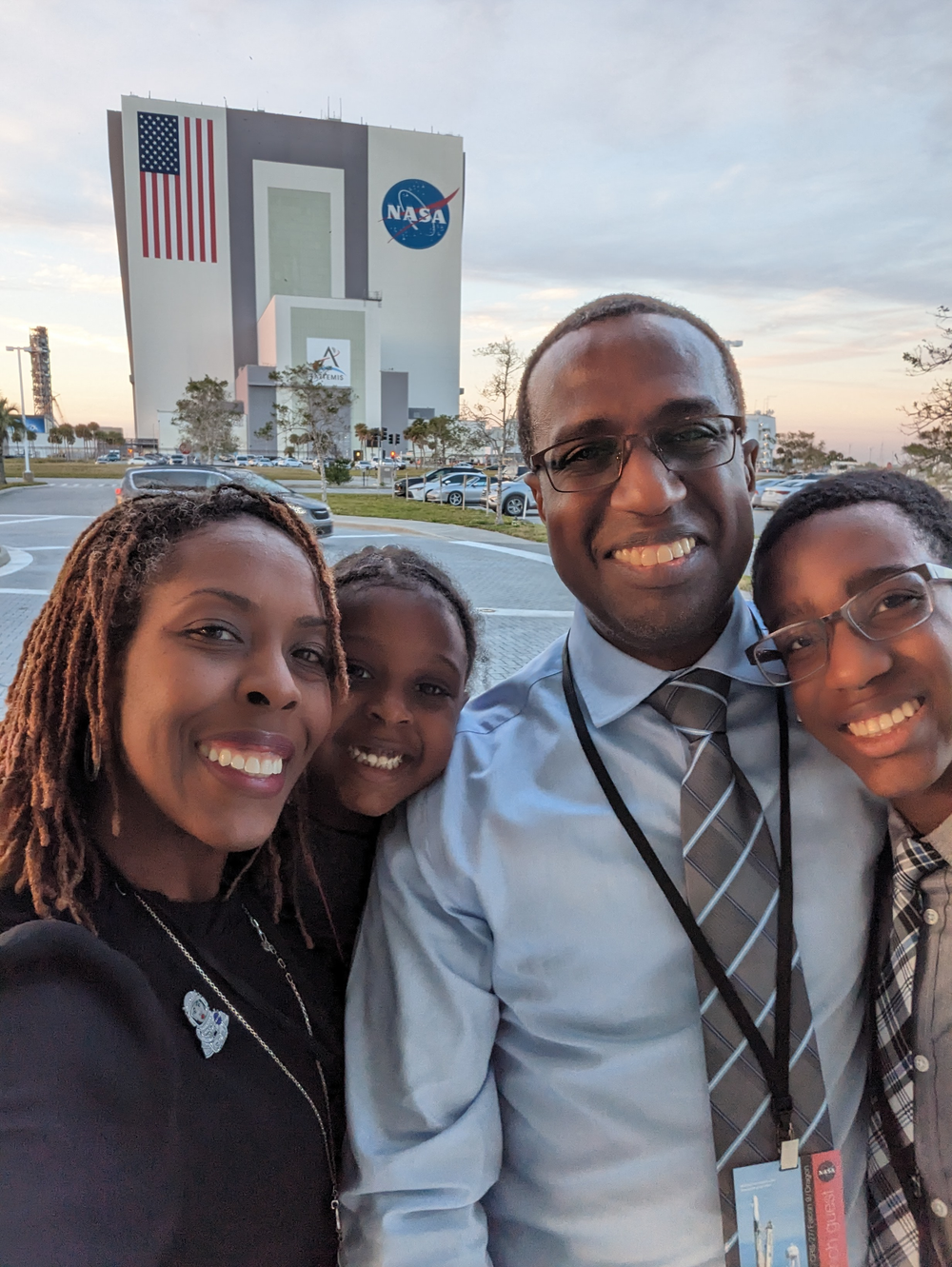
Williams also plays an integral role in Dare | Unite | Explore initiatives. She works with senior leadership to make sure the workforce has professional mobility and is able to get the training and resources for new opportunities. “We want to encourage employees to try new things, to learn, and to grow in different organizations,” she said. “Dare | Unite | Explore ensures that the Johnson workforce is fully supported in our efforts as we grow and develop and that our facilities and processes can support us and are in alignment with our future initiatives.”
“I never really thought I would work at NASA, but when I came here to interview, they put me in the shuttle simulator and I was hooked,” she said. “I encourage my children to pursue careers in STEM because it has been so beneficial to me throughout my life. The people that I have come across in my time here have been phenomenal. It makes me want to keep coming to work.”
***
Shirley Holland-Hunt, Aeroscience and Flight Mechanics Associate Division Chief
From pioneering space initiatives to championing diversity and innovation, Shirley Holland-Hunt's multifaceted leadership at NASA exemplifies the future of aerospace exploration. Her efforts have driven technological advancements and advocated for the inclusion of women and minorities in STEM fields.
Holland-Hunt currently serves as the associate division chief for Houston’s Johnson Space Center Aeroscience and Flight Mechanics Division, where she drives engineering design, development, testing, and evaluation for all phases of space flight.
She supports the identification and establishment of center partnerships and Space Act Agreements that drive the research and development of new space exploration technology. Holland-Hunt also coordinates business activities and workforce development, including planning, programming, budgeting, and execution, as well as facility management and Johnson's diversity, equity, inclusion, and accessibility initiatives.
Holland-Hunt was a member of the Dare | Unite | Explore team that launched the “Propel the Space Economy Coalition” initiative, which supports the sustainable growth of the global space economy.
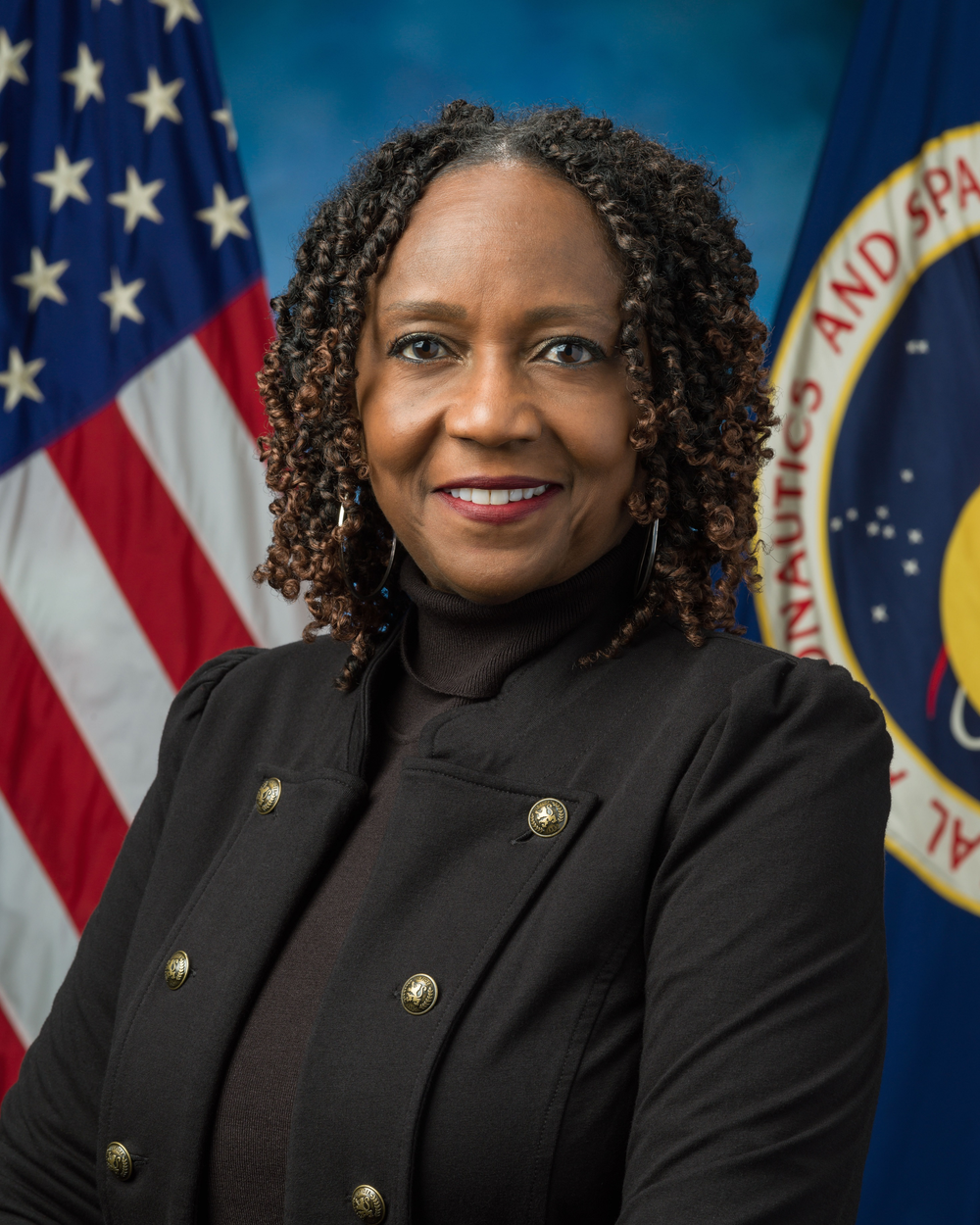
As an alumna of Prairie View A&M University, a Historically Black College and University, Holland-Hunt holds a bachelor of science in Electrical Engineering and a Master of Business Administration from the University of Phoenix. She helped develop Johnson’s first Request for Information document, showcasing her pivotal role in advancing the center's initiatives to collect data that inform future procurement actions.
She also spearheaded initiatives to promote women in leadership roles. She founded the networking group "The Women of ES" within the Structural Engineering Division to help women leaders seek opportunities and gain promotions. Additionally, she launched "The Women of EG" within the Aeroscience and Flight Mechanics Division, which conducts outreach to schools to encourage girls to pursue STEM careers.
“Each division leaves its own footprint,” she said. “Sometimes you need those small entities within a culture because the issues are different, the people are different. It’s so fulfilling to be a part of these outreach activities and see the outcome.”
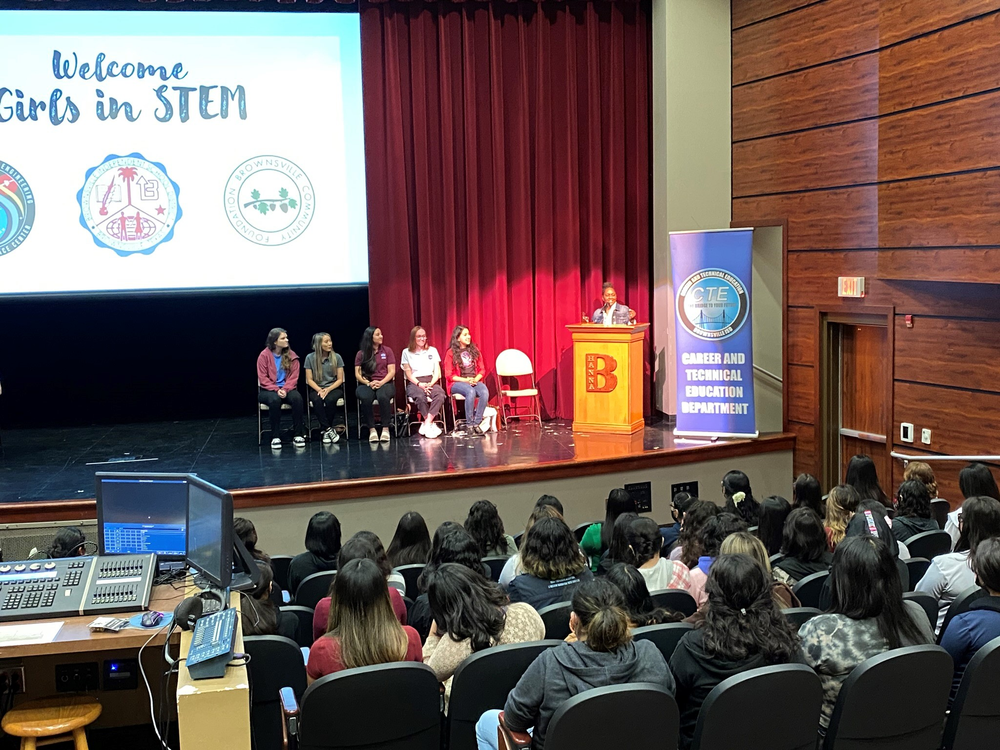
Holland-Hunt emphasizes the importance of persistence and continuous learning in your career. “Every little thing that you do or contribute to is huge. You might not see the results right away, but there is an outcome.”
She motivates students interested in pursuing space exploration careers to recognize their skills, know their worth, and work hard. “Strive to do your best daily but know that things are going to happen. Just be the best you can be.”
One of her core beliefs is to treat others with respect and acknowledge that diversity of thought is a strength. “Different means that somebody has a different way of thinking than you do, and that is a plus.”
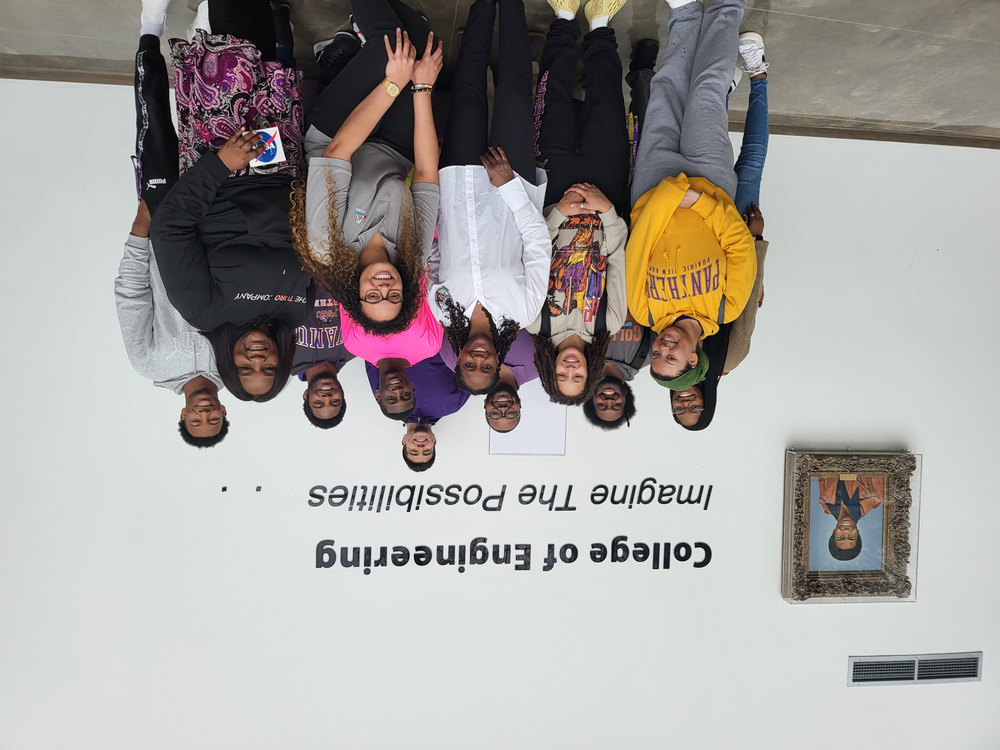
Shirley Holland-Hunt at a NASA Pathways internship outreach event at Prairie View A&M University.
Holland-Hunt is also involved in a discovery program at her church, educating young girls about careers in STEM and supporting minority students pursuing graduate programs in those fields. She recalls teachers doubting her potential to become an engineer. “I don't want another little girl to hear that she can't be something that she wants to be,” she said.
Her advice to women is to embrace new challenges without fear. “Learn and grow in everything you do. Don’t be afraid to move around in your career. You don’t need to have 100% of the skills to do it,” said Holland-Hunt. “Networking is also important—get to know people who can make a positive impact on your life.”
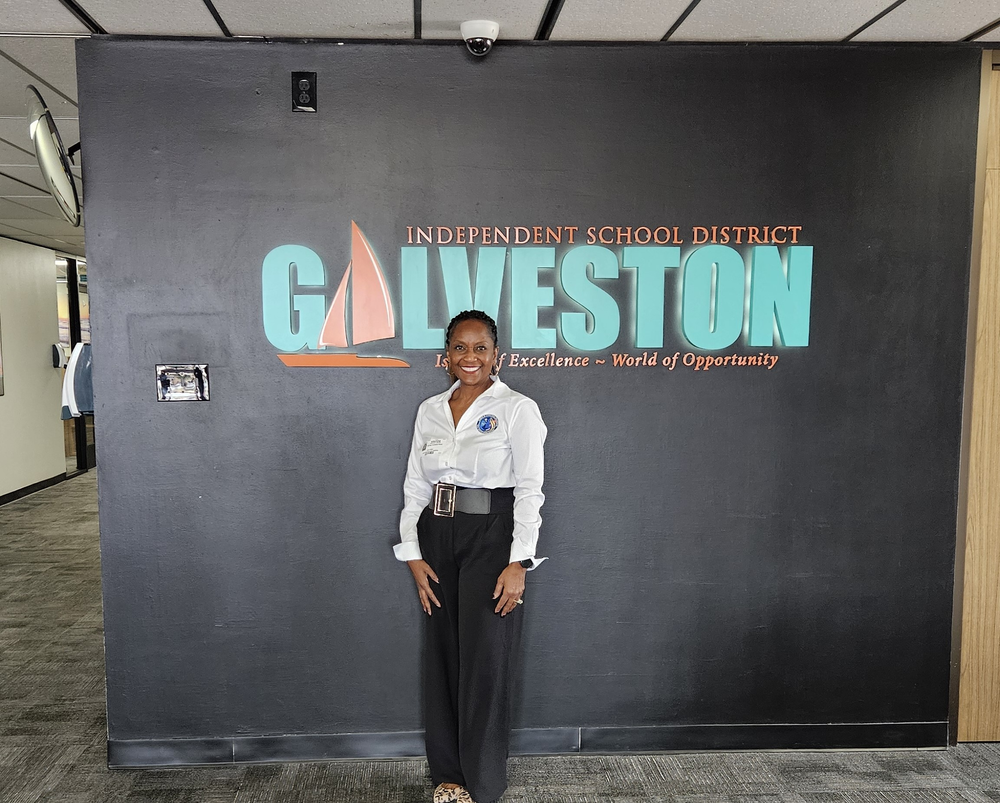
Reflecting on her career, Holland-Hunt shares, “I started at NASA in a technical field but learned later that I have a passion for people, which was shocking because I always thought I was shy and an introvert. Now, I have a passion for seeing people grow and giving back in any way I can.”
Holland-Hunt worked in flight software and avionics for the Space Shuttle Program, which she said was her favorite program to work on at NASA. “When the program ended, I had to figure out how to use my background at Johnson for future capabilities,” she said. “That is the great part of working at NASA; there are many opportunities that bring together a range of people and perspectives to foster innovation.”
Holland-Hunt's previous role managing a materials and processing group helped overcome her initial fear that her technical knowledge would hinder her ability to manage people. “I empowered everyone in that group with the respect I had for their work. They could teach me, and we trusted and learned from each other,” she said. “I know that I'm working with the best engineers in the world, and I learn so much from everyone that I work with.”
She believes that challenging herself and moving to different programs has revealed her hidden strengths and talents. “Knowing yourself is very important to be successful.”
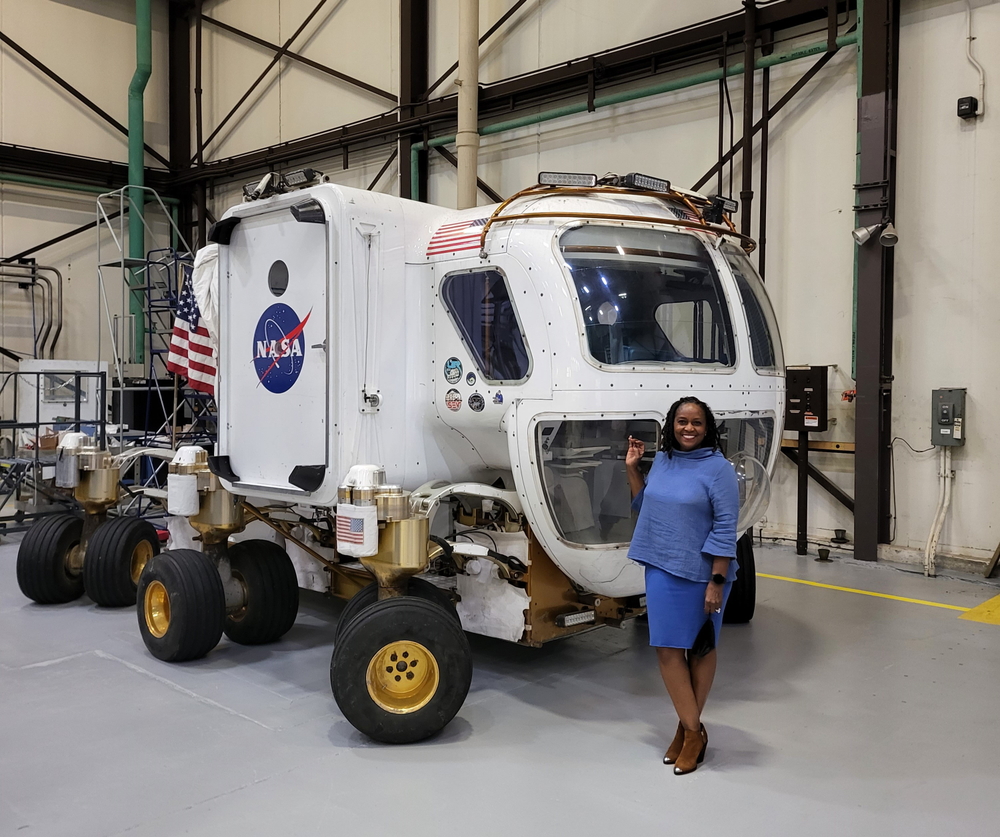
Shirley Holland-Hunt in front of NASA’s Space Exploration Vehicle at Johnson Space Center.
Holland-Hunt is also a member of the Ensemble Theatre in Houston, Texas, which aims to preserve African American artistic expression. She and her husband enjoy attending car shows and driving her 1972 Pontiac GTO.
Coming from a large family of eight, with a father who was a sharecropper, Holland-Hunt helped her family pick cotton. Despite her parents not graduating from junior high school, she and her eight siblings graduated from college, with five becoming engineers. Her husband also works for Axiom Space, one of the agency’s commercial space partners.
Holland-Hunt believes that experiencing adversity at a young age developed her character. “My parents always told me to be the best we can be and to love ourselves. That made us feel special and empowered me to do great things,” she said. “We never got new books, but we never saw it as a reason not to learn or excel. It teaches you to work with what you have. Now, when challenges come, I think, ‘That’s nothing. I’ve lived through worse.’”







